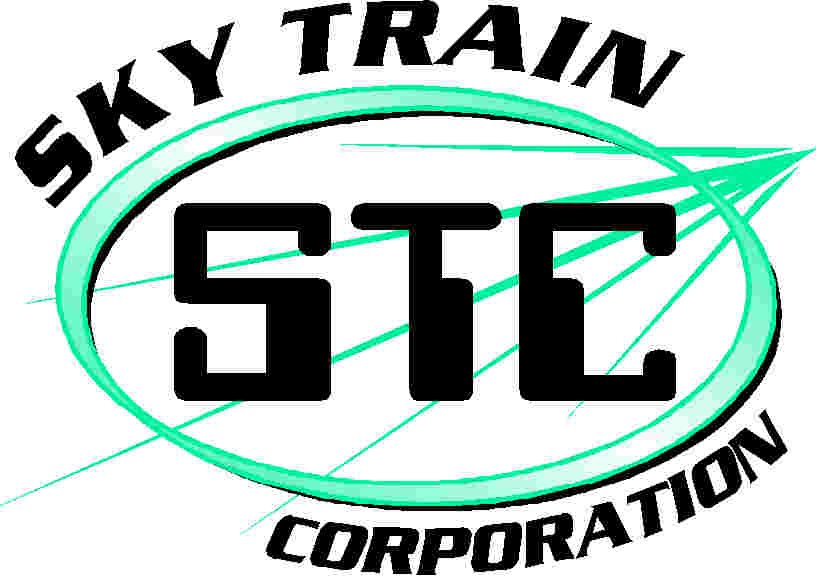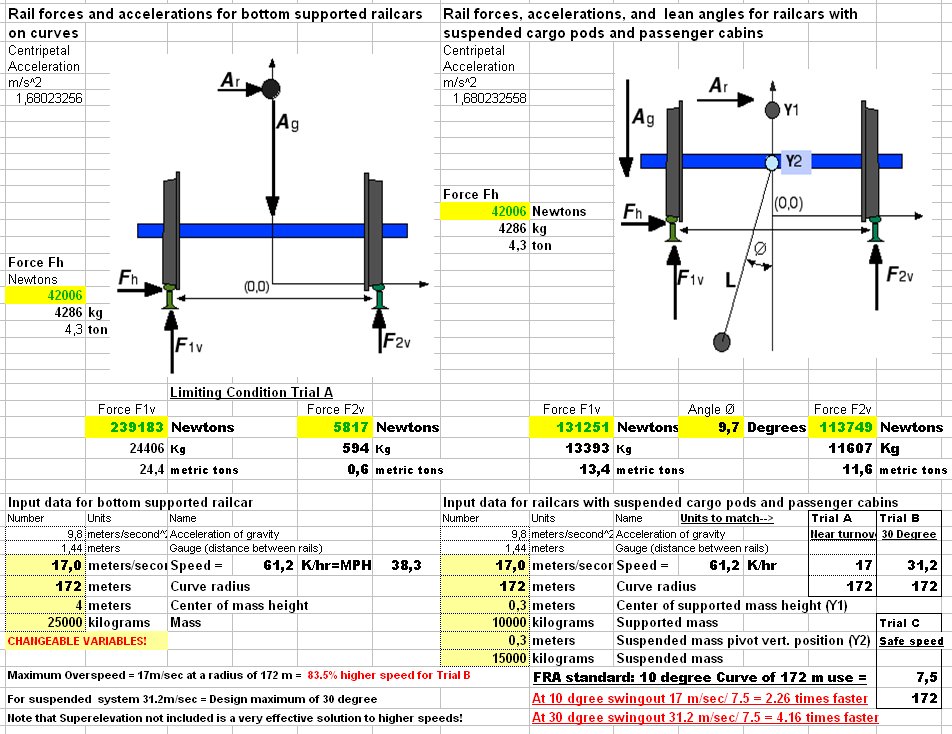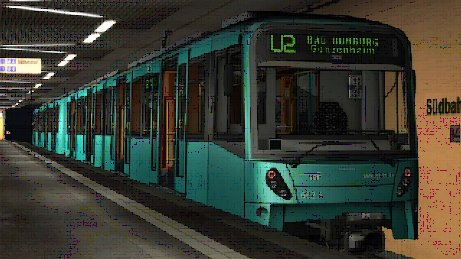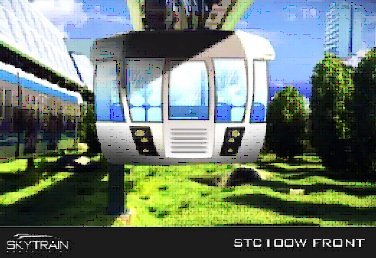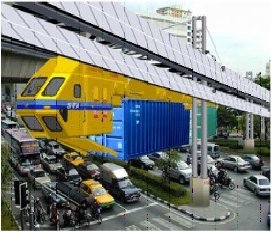
Sky Train discloses the secret behind their system; the World's most practical and fastest train!
Higher Speed Rail:
Our company conducted in October 2015 another port
automation study. Through this study we have discovered that the implementation
of our innovative STC150 logistic system, to transport containers from
sea ports to dry ports (inland intermodal terminal), and vice versa, could
replace the traditional logistic systems.
This would create a revenue source which, in turn, could simplify Public Transportation funding using our
STC100W). In this practical Dual System; both the STC150 and the STC100W
use the same elevated structure. Only good scheduling is needed!
|
Why choose Sky Train?
Normal bottom supported trains have to keep low speeds in curves to avoid derailment because of the centrifugal force.
With suspended trains this risk is inherently reduced, and with STC's "VAST" design even more so.
As seen in the little grey table above right, the limiting speed for a curve with 70 meter radius is 27 km/hour (or 7.5 meter/sec. according to FRA standards).
At this speed the load distribution of a 25 ton vehicle is 14.8 metric tons on the curve's outer rail and
10.2 metric tons on the inner rail. Note that 14.8/10.2 gives a ratio of
1.45.
But with STC's suspended "VAST" design, the distribution is 13.4 metric tons on the outer and 11.6 tons on the inner rail.
This is a much more even distribution, and it allows for much safer operation.
Take an example with higher speed; at 67 km/hour the load distribution is 14.5 tons outer and 10.5 tons on the inner rail, using STC's "VAST" technology.
At this increased speed the vertically linked load swings out because of centrifugal force; adding to passengers' comfort by swinging 9.7 degrees from center.
In addition, the "VAST" design would now travel 2.25 times faster, while greatly reducing track and switch damage and wear.
STC's original system design focused on a maximum swing of 10 degrees resulting from our 2002 testing with the
Florida Largo Railroad Group.
With this Modelling Application (AP) we can appreciate the precise effects that would result, by variating the various
parameters as a guide for bottom supported (BS) and suspended (SP) systems.
The proof is that vertical forces always total the vehicle weight!
Our first goal was that during structure design, (critical system cost), we could exactly predict the forces on the
structure itself, especially on curves. This has been now greatly
streamlined, allowing the designers to calculate force on the various components, thus increasing safety.
The second goal was to easily demonstrate, by changing the many variables, the speed difference between the
Suspended Mode (SP) and conventional Rail (BS) or Truck.
|
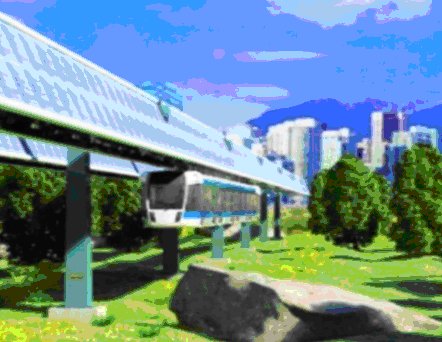
This very same principle can be applied also to road vehicles; Tank cars, trash and sand carriers or trailers to determine rollover.
This AP allows for modelling vehicle weights, and
in the future for us to build the most practical Maglev Vehicle, which
will have a 30 degree swing design, for passenger vehicles - shown in
Trial C - , and allowing for higher speed on curves (more than 4 times as fast).
At the present, we still use the Trial A (10 degree swing) design, which allows for speeds up to 2.25 as fast.
Below is a comparison between supported and suspended systems as regards rail forces and accelerations.
It can be downloaded as a PDF file. |
